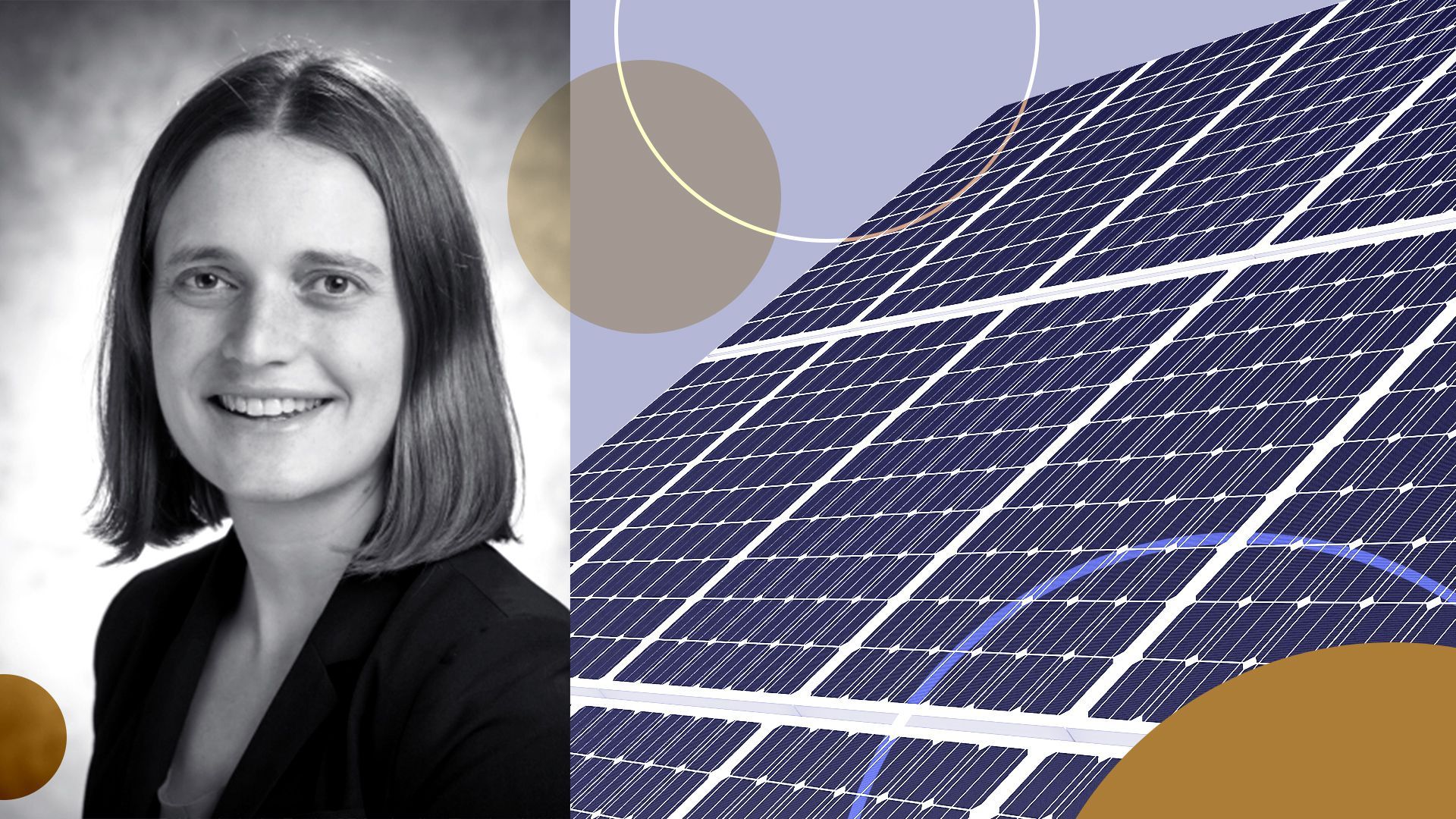Exclusive: DOE official warns of solar supply chain risks

- Jael Holzman, author ofAxios Pro: Energy Policy

Photo illustration: Gabriella Turrisi/Axios. Photo: courtesy of DOE
Relying on Asia for imports could pose a risk to U.S. solar growth, a top Department of Energy official told Axios in an interview.
Why it matters: The department is shedding light on where it believes there is risk in the solar supply chain (China) — and where there isn't — ahead of aggressive oversight from House Republicans.
What they’re saying: “There are certainly supply chain risks that come from having manufacturing concentrated in China and Southeast Asia,” DOE Solar Energy Technologies Office director Becca Jones-Albertus told Axios.
- “We certainly want a more diverse geographic footprint and we would really like to have more of that here at home.”
The big picture: Chinese parts are getting riskier for U.S. solar firms.
- The Commerce Department recently found that some of the largest solar module suppliers — all operating in China — are illegally dodging U.S. anti-dumping tariffs by routing shipments through other Asian countries.
- GOP lawmakers also urged Customs and Border Protection last month not to allow solar-related imports from companies in China over human rights concerns.
Yes, but: Jones-Albertus said solar has one big advantage over other low-carbon products: There's no shortage of the minerals it needs.
- Raw materials for making solar technology — like quartz — are found in abundance domestically, and around the world, so solar may not face the kinds of resource shortage problems befuddling batteries.
- She said the problems arrive in “those intermediate supply chain steps” where quartz is made into polysilicon for panels — another space China dominates today.
- "Supply of that raw material of quartz is not going to limit our ability to deploy solar technology," Jones-Albertus said, "but as that technology gets refined and you come into these intermediate supply chain steps, that’s where we don’t currently have U.S. manufacturing capacity."
The big picture: Jones-Albertus pitched the Inflation Reduction Act — which was packed with solar manufacturing incentives — as a solution to weaning off Asia.
- The Solar Energy Industries Association predicts the U.S. will have significant ingot, wafer and cell manufacturing in three-to-five years, partially because of IRA incentives.
- Large solar part plants have been announced across the country since the IRA passed. And Jones-Albertus expects more to come.
- “I think this is a really exciting time because the Inflation Reduction Act actually provides the incentives needed to grow that whole supply chain here,” she said.